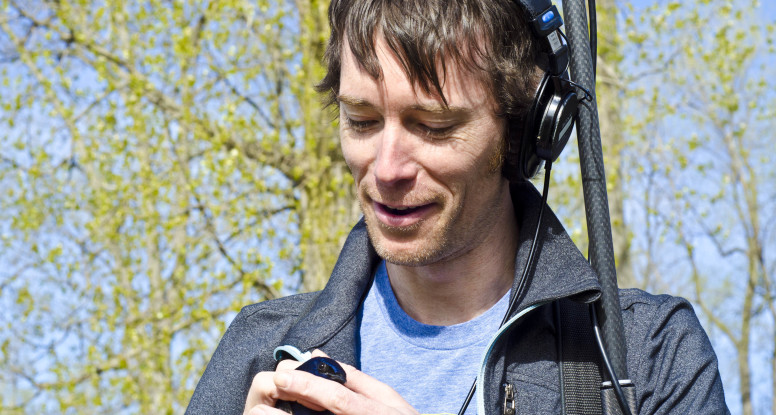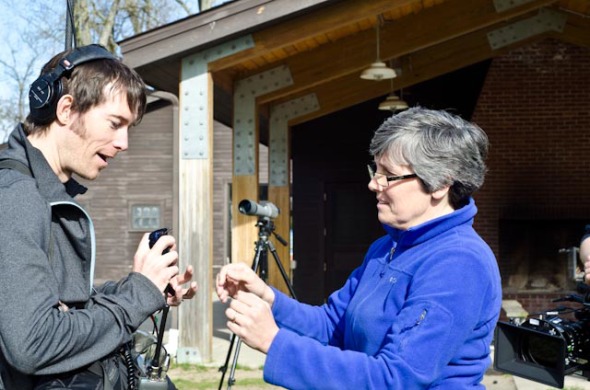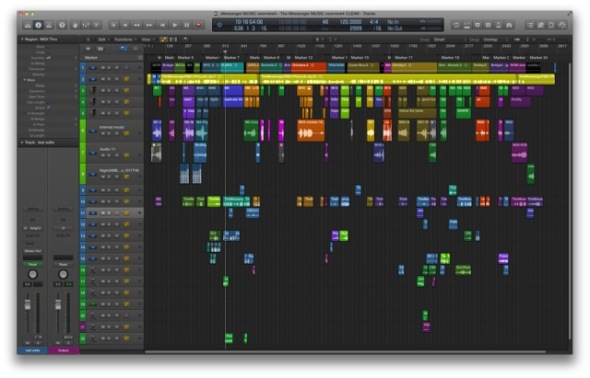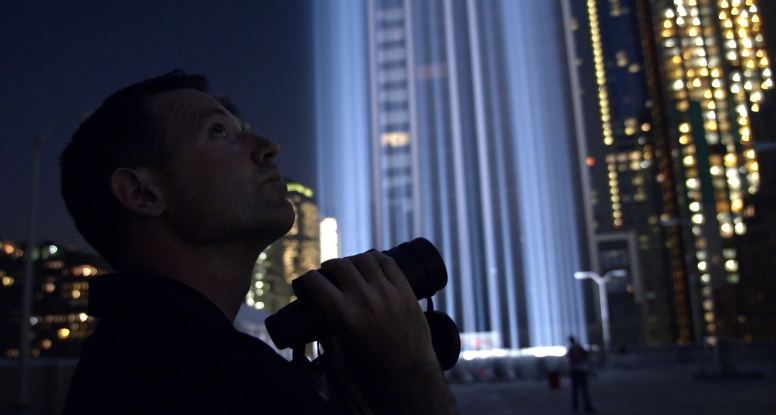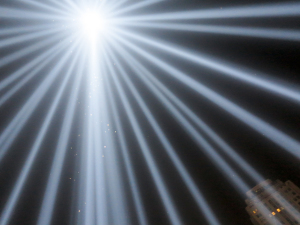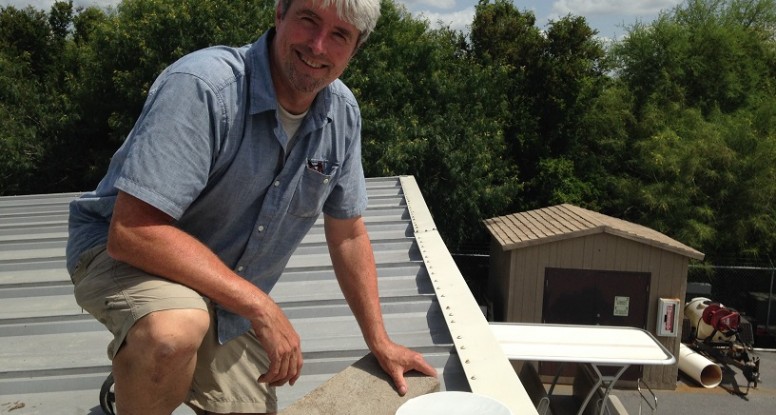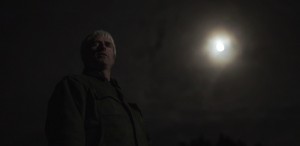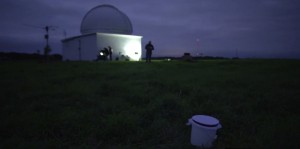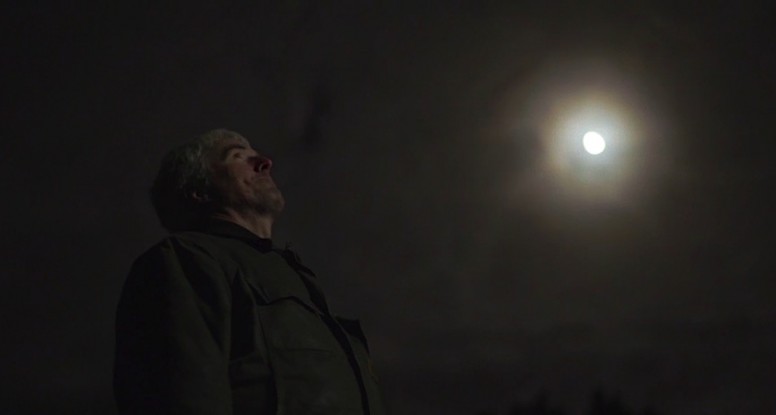Many elements go into the creation of a good documentary soundtrack, but one key ingredient is great location sound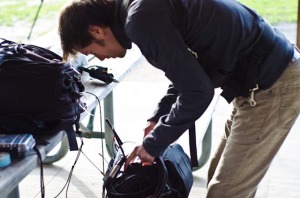 .
.
I confess I feel a bit sorry for location sound people because they only get feedback when the soundtrack is BAD. As a Director I’m guilty of rarely saying “sounds great” – because we take great sound for granted, ironically, as if it is a natural occurring phenomena. Yet there is an enormous amount of skill and talent required to obtain great location sound.
In a film about songbirds, you can imagine how important location sound is to the final soundtrack. On The Messenger documentary we primarily worked with Jason Milligan. I truly believe that Jason has “dog ears”. By this I mean an aural range beyond the average human.
A super important element of location recording is not just the “sync tracks” i.e. recording the sound that happens in tandem with the image, but recording location ambient sound.
Because the birds would be different everywhere we went, we had to ensure that we recorded the unique sounds of every place we filmed.
Here’s a sample of an ambient track of Purple Martins songs and calls that Jason recorded for us while we were filming with Bridget Stutchbury and The Purple Martin Conservation Association in Erie PA.
One of the very special audio events we recorded was in Ithaca New York during fall migration.
We were filming with Bill Evans, who designs and constructs his own microphones dedicated to capturing the night calls of migrating birds. A wonderful scene with Bill Evans is featured in our upcoming documentary SongbirdSOS to be aired on David Suzuki’s The Nature of Things. Below is a sample of the these night calls our sound recordist James MacDonald captured that evening.
Listen carefully, each species of songbird has a different call. They are only a fraction of a second long, and happen randomly ever ten seconds or so in this recording.

James MacDonald records Bill Evans and friends.
Back in post production, all of the elements of location sync sound and ambiences have to be edited. The first step is to sync all the sound – matching back to the picture, then the sound is imported into the edit suite. When our picture edit is locked – the edited sound is exported back out to another sound editor, who polishes it, takes out the umm and ahhs and clicks and pops, and prepares it for the mix. A super important element of location recording is not just the “sync tracks” i.e recording the sound that happens in tandem with the image, but recording location ambiences. Phil often mixes and merges these “categories” For example, a sound from the wilderness might be sampled and transformed into music, or a musical tone he created in studio may sound so organic, it feels as if it was part of the natural landscape. This is all done on the computer – and here’s what the soundtrack layouts looks like.
One of the most important ingredients of a great sound track is music.
During our editing process the picture editors often work with temp music. This means pulling music that has the right rhythm, pace, emotional tone / feeling and / or instrumentation from one’s own music collection and cutting it into the soundtrack temporarily.
In creating The Messenger soundtrack composer Phil Strong worked in tandem with the picture editing process, often creating music for the scenes as they evolved.
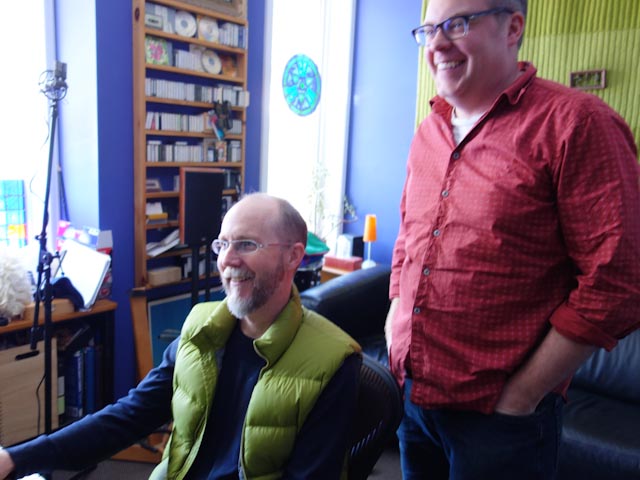
Composer and sound designer Phil Strong and Picture editor Eamonn O’Connor at a spotting session in Phil’s studio.
More on Jason Milligan http://www.documentarysound.ca/
Jason Milligan is a two time Gemini Nominated Sound Recordist (for “The Take” and “Memory for Max, Claire, Ida, and Company”) based in Toronto, Ontario, Canada, who specializes in recording sound on location for Documentaries, Lifestyle, and Reality Programs. Jason has travelled extensively around the world and worked in Argentina, China, France, India, Japan, Jordan, the Netherlands, Peru, Saudi Arabia, St. Vincent, Turkey, the United Arab Emirates, the United Kingdom, and the United States.

